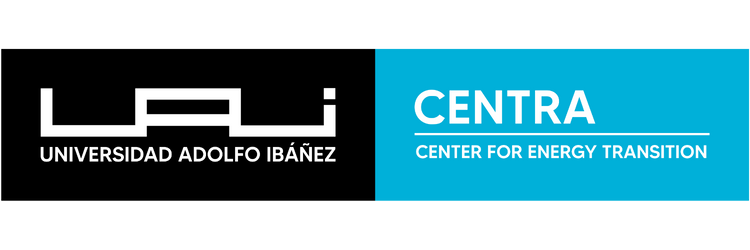The benefits of solar roofs
March 5, 2023
Solar rooftops can be installed on commercial premises, public buildings, and homes, among other options.
The installation of these systems reduces electricity use as they can be designed for self-consumption or to inject surplus energy into the grid. Additionally, they displace the use of fossil fuels in energy generation.
IMPRESSIVE ARE the aerial views of the solar parks built in the Atacama Desert, consisting of tens of thousands or, in some cases, hundreds of thousands of photovoltaic panels. These large-scale installations are often located in expansive areas due to the space typically required for renewable energy projects.
However, there are also smaller solar systems that have seen significant development recently in both public and private infrastructure. These are solar rooftops, a solution that has gained increasing momentum in Chile, especially through institutional initiatives.
According to Edward Fuentealba, Dr. Eng. and Principal Researcher at SERC Chile, solar rooftops are infrastructure installations that generate electricity or heat through solar energy on roofs, whether residential, commercial, or otherwise. “These can be photovoltaic systems—for electricity generation—or solar thermal systems—for generating heat by heating a fluid,” explains the academic.
Complementing this definition, Carlos Silva, Ph.D. in Electrical Engineering, academic and researcher at the Energy Transition Center (CENTRA) at Universidad Adolfo Ibáñez (UAI), adds that solar rooftops can take various forms: “From the simplest, installing solar panels on a house’s roof, to more sophisticated ones like using panels as the building material for the roofs themselves. For example, constructing the roof of a parking lot or warehouse with solar panels.”
Benefits
What are the benefits of these systems in terms of energy savings for homes and public facilities?
According to Edward Fuentealba, these installations have the advantage of supplying electricity locally, reducing electricity consumption. He notes that these projects can cover part or all of a facility’s electricity needs. “Depending on the type of registration and the installation process, they can be designed for self-consumption or to inject excess electricity into the grid,” he explains.
Carlos Silva emphasizes that the economic benefits of solar rooftops depend on the current tariff framework. “In Chile, we have a renewable energy generation incentive mechanism known as net billing. Through this, the distribution company pays the prosumer—a consumer who also produces energy—the wholesale purchase price, typically between 60% and 70% of the retail energy price,” the academic states. He adds that this scheme provides lower incentives for users but has no fiscal cost.
Moreover, installing panels on rooftops also yields environmental benefits. In this regard, the SERC Chile expert highlights that solar rooftops reduce the need for electricity generation and transportation, or the fuels used for these purposes. “This contributes to the concept of distributed generation, which, in some cases, reduces energy transmission systems since energy is generated at the point of consumption,” he explains.
On the other hand, Carlos Silva believes the main socio-environmental benefit of solar rooftops is bringing energy closer to people. In the conventional model, the researcher explains, energy is generated hundreds of kilometers away from the consumption point, meaning the externalities associated with its generation and transportation—such as emissions, water use, and other impacts—are borne by the communities near the projects, not by the energy’s beneficiaries. “With solar rooftops, residential generators and consumers are the same entity, thus avoiding third-party impacts from energy generation and transportation,” he asserts.
“Depending on the type of registration and installation process, solar rooftops can be designed for self-consumption or to inject surplus electricity into the grid,” Edward Fuentealba, Dr. Eng., Principal Researcher at SERC Chile.
In Homes
In the mid-2010s, the Public Solar Rooftops Program was launched, installing over a hundred systems in various facilities across the country, including public buildings, educational establishments, and an aerodrome.
This initiative later evolved into the Solar Home Program, driven by the Ministry of Energy and implemented by the Energy Sustainability Agency (Agencia SE). Its objective is to promote renewable energy through the installation of 1 kWp and 2 kWp photovoltaic systems connected to the grid (without batteries) on residential rooftops. This program enables households to acquire photovoltaic systems at a lower cost, with state co-financing.
Claudio Pérez, head of the Renewable Energy area at Agencia SE, states that the Solar Home program aims to bring the benefits of photovoltaic energy to homes across the country.
Two iterations of the program have been carried out to date. “The first is nearing the completion of project implementation and connection to the grid. The second has already closed the beneficiary registration phase, with reservations confirmed, and we are finalizing the adjudication of implementing companies in different municipalities,” says Pérez. This will allow panel installations to begin this year, depending on equipment imports, installations, and subsequent connection to the grid.
Community Generation
Regarding achievements, the Agencia SE representative highlights that the Solar Home Program has accelerated solar rooftop installations in Chilean homes by over 50%. “Before Solar Home, there were 5,000 homes in 9 years of the Distributed Generation Law,” Pérez notes.
For this year, the plan is to complete the grid connection process for Solar Home beneficiaries from the first call. Additionally, they aim to start installing photovoltaic systems for the second round of beneficiaries.
“The Solar Home Program is working on developing new types of projects, such as community generation,” Claudio Pérez, head of the Renewable Energy area at Agencia SE.
Claudio Pérez also mentions that the program is exploring new project types, such as community generation. He explained that this could involve installing a 300 kW photovoltaic plant on public land, for example, and using energy sales to provide “remote or virtual” discounts on the electricity bills of families living in apartments or houses.
“In Chile, we have a renewable energy generation incentive mechanism known as net billing,” Carlos Silva, academic and researcher at CENTRA-UAI.
Read the article in Revista EI.

